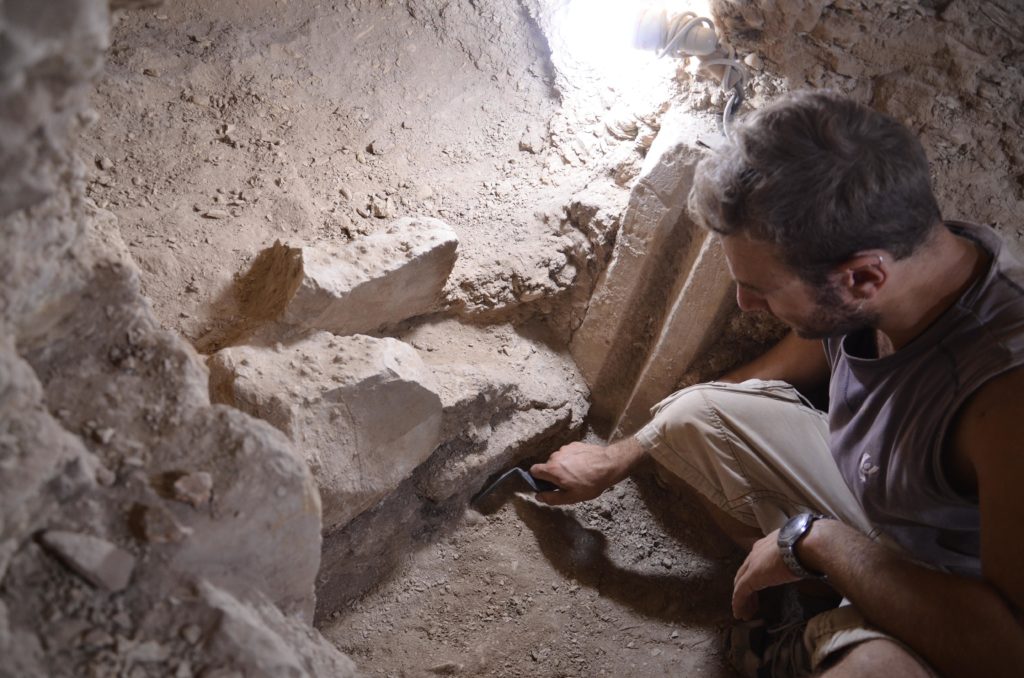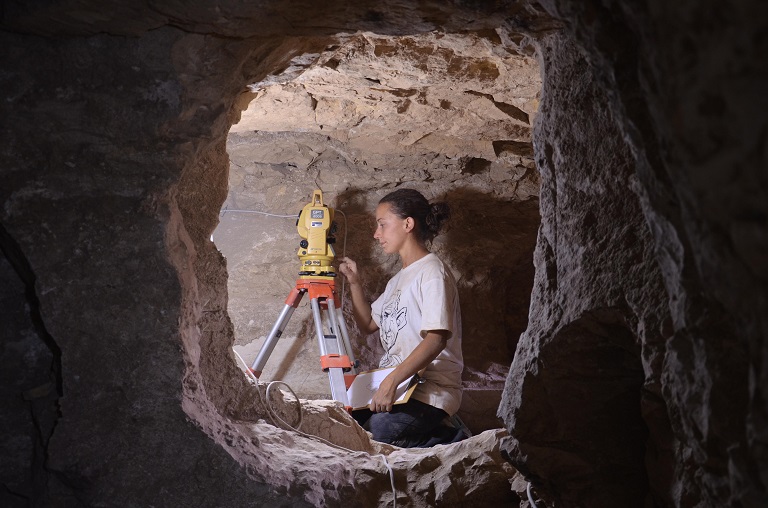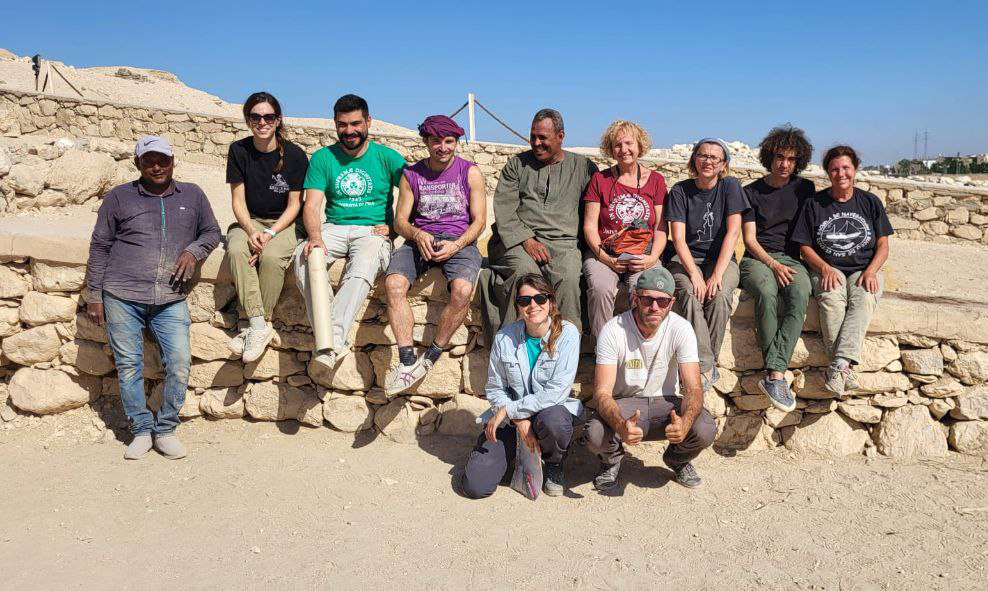
The necropoles of the ancient Thebes, on the west bank of the Nile opposite Luxor, is one of the best known and most visited sites in Egypt. Many finds, which we admire in museums all over the world, come from its necropoles. This is where the excavation concession of the University of Pisa is located, in western Thebes (Luxor).
At the moment, the concession includes some rock tombs discovered in past years by the mission. The area is located specifically in the Dra Abu el-Naga sector, one of the oldest and least known of the Theban necropoles, occupied by the end of the third millenium BC and the location of the royal necropolis before the pharaohs’ tombs were moved to the Valley of the Kings.
Starting from 2003, the research in the area had as its first objective of excavation and study a painted rock tomb, the Theban Tomb 14 (TT14), dated to the Ramesside age (1250-1200 BC). In October 2004, the mission discovered – and completely excavated in several following seasons – a larger and more ancient tomb (probably to be dated around 1500 BC) to the northwest of TT14, and it was named M.I.D.A.N.05 (acronym of the mission).
Around its courtyard a group of other funeral rock chapels gathered over time: on the north side, two tombs probably contemporary and belonging to the same family of M.I.D.A.N.05, discovered in 2010 but not yet excavated; on the south side, in chronological order, TT14, the small tomb E and another unexplored hypogeum.
In 2014, the archaeological investigation of the funerary pit was completed; it has three burial chambers and was located in the same court, so probably has to be related to M.I.D.A.N.05.
All the structures have been reused during different ages: in the case of M.I.D.A.N.05, this continued until the Roman age.

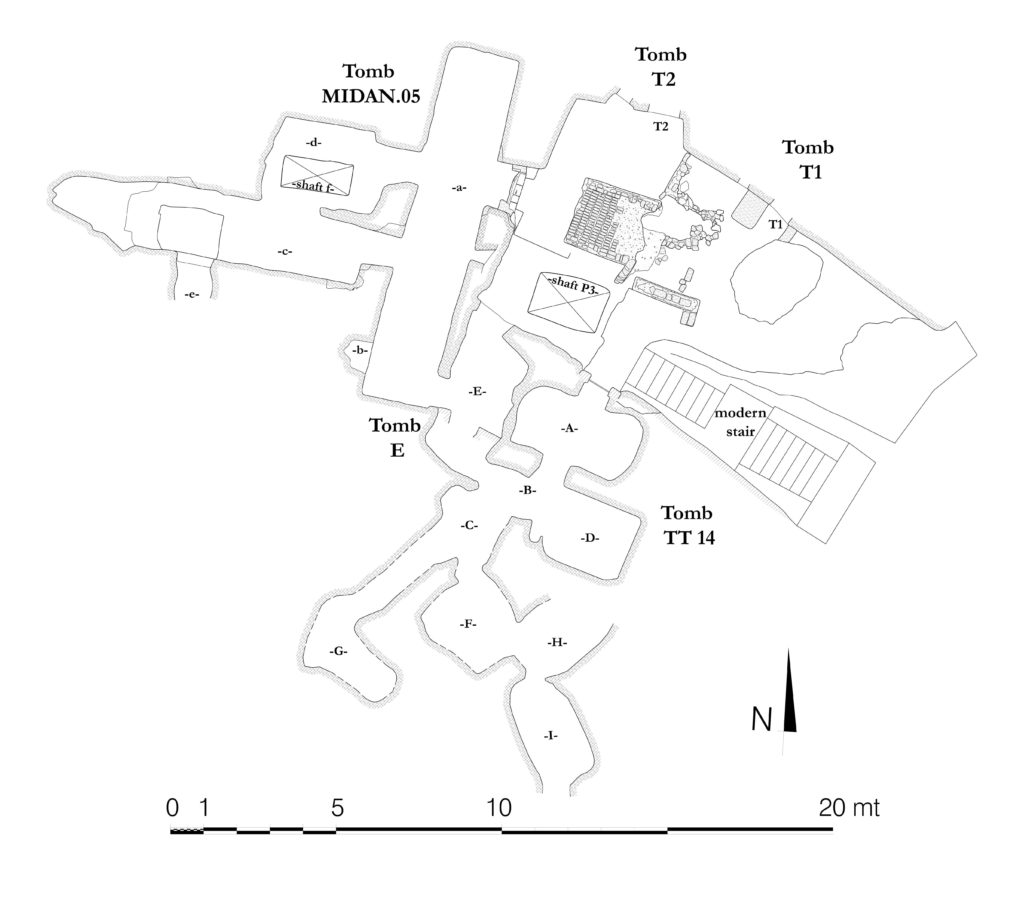
TT14
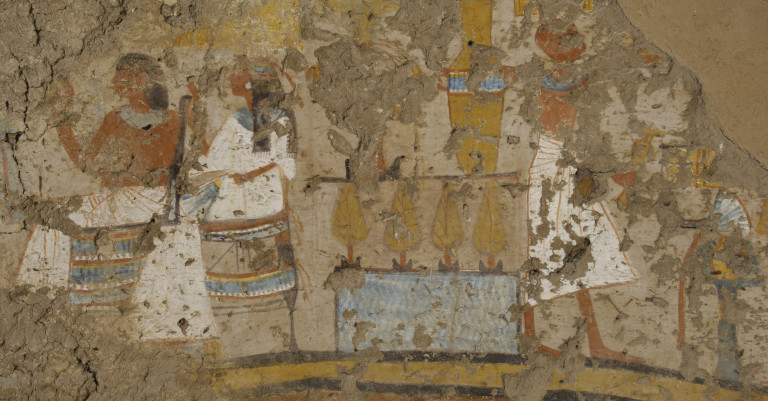
At the end of the long reign of Ramses II (1279-1213 BC), the priest Huy, assigned to the worship of the deified king Amenhotep I, dug a small hypogeum for himself and his family on the southern side of the court of M.I.D.A.N.05. From this tomb, known as Theban Tomb 14, our archaeological exploration began in 2003.
The tomb consists of a small chapel, completely painted on its walls and ceiling, and of a burial section which goes underground through tunnels and small rooms carved in the rock, and lacking in decoration. The scenes in the chapel show moments of Huy’s activities as a priest – extremely interesting for the study of the cult of Amenhotep I – together with traditional themes, such as funerary banquet, funeral and judgement before the divine court.
The almost completed archaeological investigation of the burial sector highlights the succession of use and reuse of the hypogeum between the end of the second millenium and the beginning of the first millenium BC. Some of the finds provided remarkable evidence of cults related to the concept of fertility and rebirth.
M.I.D.A.N.05
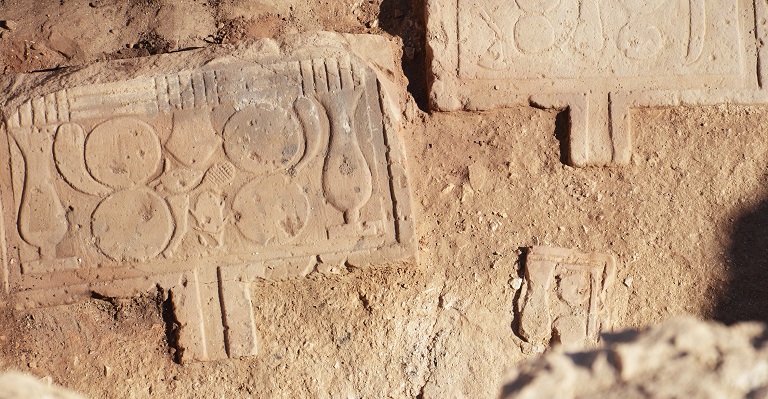
The original plan, one of the first examples of T-shaped Theban tomb, had a window to the right of the entrance. It is a very rare feature, shared also by the two tombs discovered in 2010 on the north side of the courtyard.
During the enlarging phase of the tomb, in the first half of the 18th dynasty, the window was walled, the front carved with texts and images, and the inside rooms were plastered and painted. Very few remains of these paintings have been preserved: the married couple with children during the funerary banquet, a scene of metallurgy and goldsmith craftsmanship, and fragments of geometrical motifs on the ceiling.
Unlike TT14, here the entrance to the funerary sector was through a vertical pit. The oldest one, 4.5 m. deep, is located inside the tomb and has four chambers at the bottom. In one of these, many fragments of one or two coffins, of the so called “rishi”(feathered) type common to the 16th century BC, were found. The pit P3, discovered in front of the southern wall on the outside, was probably also used by later occupants of the tomb between the end of the 18th and the 19th dynasties. Excavated during the 2014 mission, its chambers have provided many painted fragments of a very rare and lesser known type of wooden coffin datable around that age.
All of the tomb’s burial chambers were reused and looted many times during its long life: only a few names have survived on the grave goods, and unfortunately it is not possible to identify its owner’s names, either from the few hieroglyphs preserved in the painted scenes or by the fragments carved in the façade.
Both TT14 and M.I.D.A.N.05 have been completely documented by illustrations and high resolution photos and also by virtual model reconstruction, obtained through 3D laser scan and characterized by very realistic scientific images of the chambers and of some of the objects found in them.
